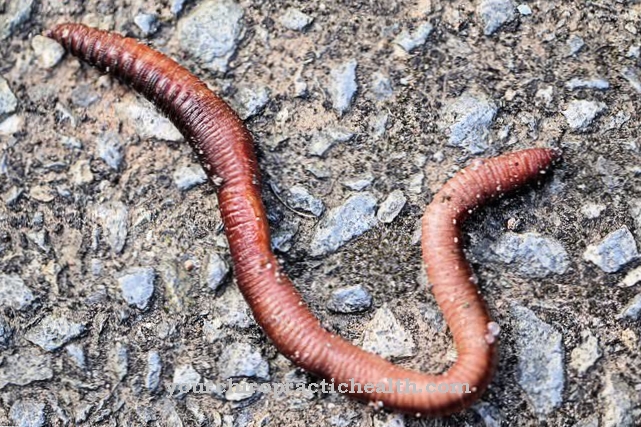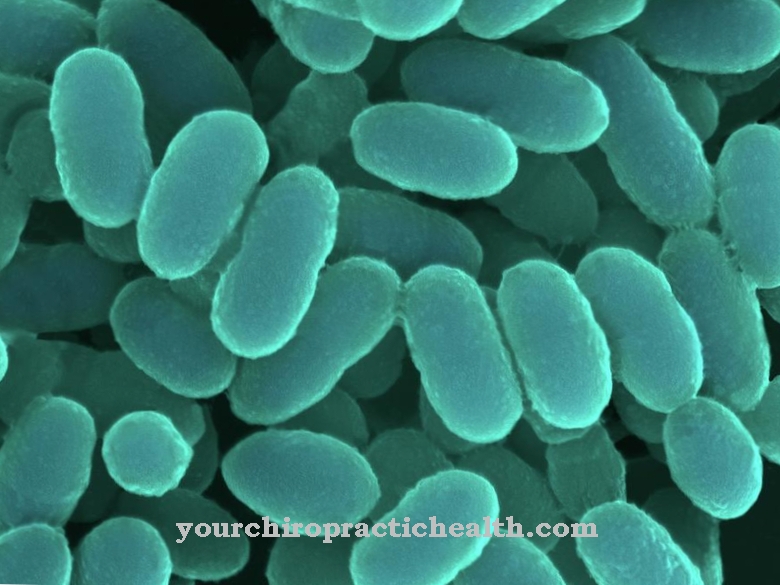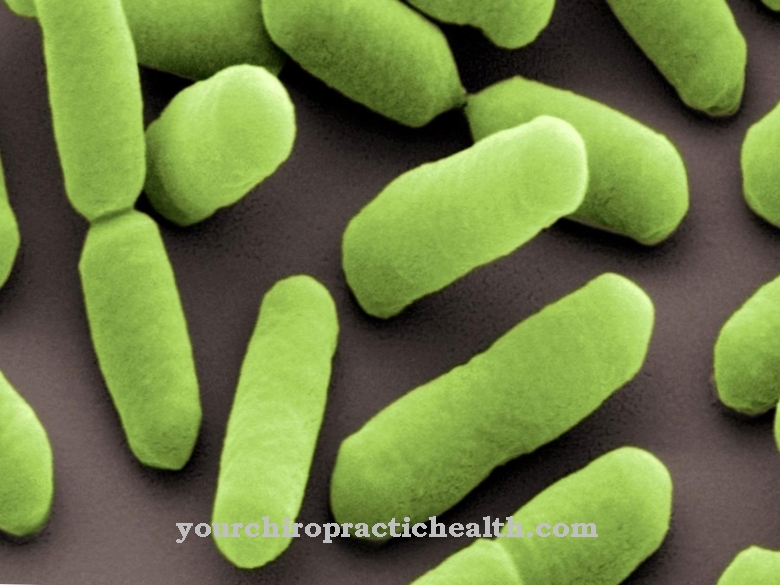Bacillales are an order from the bacterial class of Bacilli that includes families such as Alicyclobacillaceae, Bacillaceae, Listeriaceae, and Paenibacillaceae. Bacteria of the order show gram-positive properties and often form endospores, especially under unfavorable conditions. While some are used as probiotics, others are opportunistic or obligatory pathogens.
What are bacillales?
Bacilli are a class of Gram-positive bacteria with a low GC content. Parts of the exact system are so far uncertain. Nonetheless, the bacterial order of the Bacillales belongs to the class Bacilli.
The Bacillales are gram-positive bacteria that mostly come in the form of rods. Most of the representatives of the order are aerobic. The sometimes important characteristic of the individual representatives is their ability to form endospores in the event of a lack of food, extreme temperatures or other unfavorable conditions.
The genus Bacillus from the bacterial family Bacillaceae gave the order Bacillales its name. According to today's understanding, the order includes families such as the Alicyclobacillaceae, Bacillaceae, Listeriaceae and Paenibacillaceae families. In addition, the bacteria families Pasteuriaceae, Planococcaceae, Sporolactobacillaceae, Staphylococcaceae and Thermoactinomycetaceae are included under the order.
Different genera have not yet been assigned to any family. These genera include, for example, Exiguobacterium and Gemella and Solibacillus. Analysis of their 16S rRNA sequence indicates that they are closely related to representatives of the order Bacillales. For this reason, the three genera are initially assigned to the order.
Occurrence, Distribution & Properties
Bacterial families of the order Bacillales are mostly rod-shaped, but as Planococcaceae they can also be cocci-shaped, for example. The representatives of the order are usually aerobic. The metabolism of the microorganisms cannot do without oxygen. The individual representatives of the order are dependent on an oxygen-rich environment in order to grow and survive.
Representatives such as the Listeriaceae family are partially facultative anaerobic. So you can survive without oxygen if absolutely necessary. Your metabolism changes for this purpose and, if necessary, uses other substances to generate energy.
Some representatives of the Bacillales, for example, also operate fermentation and use glucose or lactate. Still other representatives practice nitrogen oxidation. The Planococcaceae family in particular has the enzymes catalase and oxidase.
While many representatives of the order are fundamentally immobile, individual representatives of the Listeriaceae family, for example, are flagellated and thus capable of active locomotion. The order of the Bacillales is quite diverse with regard to the ideal growth conditions. Many families of the order are warmth-loving. Some are characterized as acid-loving, for example Alicyclobacillaceae.
As different as the preferred milieu of the individual families, as different are their distribution and living space. Individuals from the order Bacillales therefore occur in normal soils as well as in water and air. The genus Bacillus in particular is also a physiological part of the human and animal intestinal flora.
Some representatives of the Bacillales order can appear as fruit juice spoilers. The Paenibacillaceae family prefers to colonize insects and is responsible for a number of insect diseases.
Not all, but most of the families of the order Bacillales, form endospores.Endospores are a form of persistence that bacteria form within an organism or cell. The endospore-forming representatives of the Bacillales operate endospores mainly under unfavorable conditions in order to secure a survival advantage for themselves. Endospores are usually relatively resistant to heat, extreme cold, dehydration, radiation, extreme pH values and chemicals.
Meaning & function
The species Bacillus subtilis of the genus Bacillales is now used as a biological weapon under certain circumstances. It is a probotic that is used against pathogenic prebiotics in the intestine and can curb the growth of bifidobacteria. Representatives of the species have high enzymatic activity and thus stimulate digestion. In addition, they produce virus-killing interferon.
In the intestine, Bacillus subtilis has a bactericidal effect against Escherichia, Proteus, Salmonella, Klebsiella and Citrobacter, but also enterobacteria, Streptococcus, Staphylococcus, Clostridium or Pseudomonas.
As part of the physiological intestinal flora, many other representatives of the Bacillales order fulfill similar functions. The order therefore includes by far not only pathogenic pathogens, but also neutral commensals and even porbiotics that are useful to humans. Bacteria of this kind prevent diarrhea, protect against intestinal infections with pathogenic agents and restore the normal intestinal flora after antibiotic treatment.
Illnesses & ailments
Different families of the order Bacillales include human pathogens. This is especially true for Bacillus. This group of bacteria includes both non-pathogenic and obligate pathogenic or opportunistic pathogens.
Especially opportunistic pathogens of the species Bacillus cereus or Bacillus stearothermophilus can lead to food poisoning for immunosuppressed or otherwise constitutionally ailing people, while people with strong immune systems do not have to fear an infection.
An obligate pathogenic species is the species Bacillus anthracis, which causes so-called anthrax. Infection can occur through direct contact or the consumption of contaminated food. However, inhalation of the spores through the air can also lead to infection. Representatives of the species Bacillus anthracis produce the so-called anthrax toxin. This mixture of proteins is an exotoxin that the bacteria excrete when they become infected. After the host cells are invaded, the protein mixture destroys cellular tissue.
The anthrax is treated with penicillin. In addition, ciprofloxacin, erythromycin and tetracyclines are available for treatment.
























.jpg)



